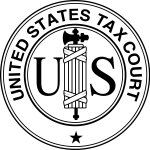 The U.S. Senate has confirmed Bingham’s Ron Buch and Georgetown’s Albert Lauber to serve as the two newest members of the United States Tax Court.
The U.S. Senate has confirmed Bingham’s Ron Buch and Georgetown’s Albert Lauber to serve as the two newest members of the United States Tax Court.
Category Archives: Tax News
IRS Releases Proposed Regs and FAQs on 3.8% Net Investment Income Tax
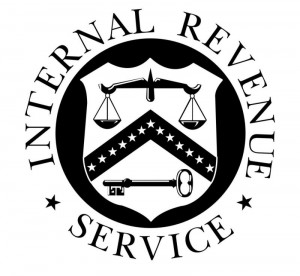 With tax provisions set to expire on payroll taxes, capital gains rates, income tax rates, AMT exemptions, estate taxes, and nearly everything else, the tax picture for 2013 is anything but clear.
With tax provisions set to expire on payroll taxes, capital gains rates, income tax rates, AMT exemptions, estate taxes, and nearly everything else, the tax picture for 2013 is anything but clear.
One thing that we can expect with certainty on January 1, 2013, is the introduction of the 3.8% investment tax under new Internal Revenue Code Section 1411. The new provision adds a 3.8% tax on the “net investment income” of individuals, estates, and trusts with modified adjusted gross income in excess of the threshold amounts of:
- $250,000 for joint returns and surviving spouses;
- $125,000 for married taxpayers filing separately; and
- $200,000 for everyone else.
Until now, there was little guidance on the details of this provision from the Patient Protection and Affordable Care Act (Obamacare). The Internal Revenue Service has now provided guidance in the form of proposed regulations and Frequently Asked Questions (FAQs).
Ambitious practitioners have until March 5, 2013, to submit comments on the proposed rulemaking.
U.S. Supreme Court Upholds the Healthcare Individual Mandate under the Taxing Clause
The United States Supreme Court has just ruled that the individual mandate in the Patient Protection and Affordable Care Act (Obamacare) may be upheld as within Congress’s power under the Taxing Clause. The opinion of the court was delivered by Chief Justice John Roberts.
Read the full text of the slip opinion here:
NFIB v. Sebelius, Docket No 11-393 (U.S. Sup. Ct. June 28, 2012)
California Supreme Court: Employer Must Prove Qualified Employees to Receive Tax Credit
 In a long-awaited decision affecting many large California employers and hundreds of millions of dollars of tax credits, the California Supreme Court reversed the Court of Appeal decision in Dicon Fiberoptics v. Franchise Tax Board, holding that the Franchise Tax Board (FTB) may require a taxpayer to establish that certain employees in specified enterprise zones are “qualified employees”, above and beyond the state’s certification process, in order to receive hiring incentive tax credits.
In a long-awaited decision affecting many large California employers and hundreds of millions of dollars of tax credits, the California Supreme Court reversed the Court of Appeal decision in Dicon Fiberoptics v. Franchise Tax Board, holding that the Franchise Tax Board (FTB) may require a taxpayer to establish that certain employees in specified enterprise zones are “qualified employees”, above and beyond the state’s certification process, in order to receive hiring incentive tax credits.
The Court of Appeal had held that the state-issued vouchers received by Dicon (and every other employer who participated in the enterprise zone tax credit program) were “prima facie” proof of a qualified employee and that the FTB had to establish that the employee was not eligible under the program before denying the employer the benefit of the associated tax credit. As a practical matter, the Court of Appeals case treated the state-issued certifications as conclusory evidence of the employee’s qualification. The Supreme Court reversed this crucial element of the Court of Appeal decision, thereby allowing the FTB to deny the credit where the only evidence of the employee’s qualification was the voucher and shifting the burden to the taxpayer to establish that the employee was otherwise qualified for the incentive tax credit.
Read the entire opinion here:
Dicon Fiberoptics v. Franchise Tax Board, No. S173860 (Ca. Sup. April 26, 2012)
Altria Settles 14 Years of SILO/LILO Transactions for $500 Million
 On May 22, Altria announced that it executed a closing agreement with the Internal Revenue Service settling the federal income tax treatment of fourteen years of leveraged lease transactions (commonly known as lease-in/lease-out (LILO) and sale-in/lease-out (SILO) transactions) entered into by Altria’s wholly-owned subsidiary, Philip Morris Capital Corporation.
On May 22, Altria announced that it executed a closing agreement with the Internal Revenue Service settling the federal income tax treatment of fourteen years of leveraged lease transactions (commonly known as lease-in/lease-out (LILO) and sale-in/lease-out (SILO) transactions) entered into by Altria’s wholly-owned subsidiary, Philip Morris Capital Corporation.
Altria had defied the IRS challenges to these transactions in a number of pending cases. In October 2006, Altria filed a complaint in the United States District Court for the Southern District of New York to claim refunds related to its LILO and SILO transactions for 1996 and 1997. In July 2009, following an eleven day trial, a jury returned a unanimous verdict in favor of the IRS. Altria filed motions for judgment as a matter of law or, in the alternative, for a new trial. On March 17, 2010, the court denied Altria’s post-trial motions and, on April 19, 2010, entered final judgment in favor of the IRS.
Altria appealed the final judgment to the United State Court of Appeals for the Second Circuit. In an opinion released on September 27, 2011, the Second Circuit affirmed the District Court’s ruling, and the jury’s findings, against Altria. Altria had a similar tax refund claim pending in the Southern District of New York for the same transactions applicable to the 1998 and 1999 tax years.
According to the press release issued by Altria, the settlement included the 1996 through 1999 tax years and tax years through 2003, in all of which the IRS had disallowed the tax benefits claimed from these transactions. The settlement also covered the tax years 2004 through 2009 for which Altria claimed tax benefits generated by the LILO and SILO transactions but which the IRS was expected to disallow. Altria did not claim tax benefits pertaining to the LILO and SILO transactions in the 2010 and 2011 tax years and, under the terms of the settlement agreement, will not claim such benefits in future tax years.
Altria expects to pay approximately $450 million in federal income taxes and related estimated interest with respect to the 2000 through 2010 tax years. The payment is net of federal income taxes that Altria paid on gains associated with the sales of assets leased in the LILO and SILO transactions from January 1, 2008 through December 31, 2011. Of the $500 million, Altria also expects to pay approximately $50 million of state taxes and related estimated interest. The tax component of these payments represents an acceleration of federal and state income taxes that Altria would have otherwise paid over the lease terms of the LILO and SILO transactions. Pursuant to the settlement agreement, the IRS will not assess penalties against Altria for the LILO and SILO transactions in any tax year, open or closed, through the 2010.
Read the Altria Group, Inc. press release here:
Altria PMCC Press Release May 22, 2012
Read the Second Circuit’s Opinion here:
Altria Group v. US, No 10-2404 (2d Cir. 2011)
IRS Issues Guidance for Schedule UTP Concise Descriptions
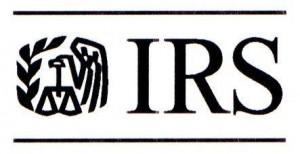 The IRS revised the Instructions for Schedule UTP in early February but one thing that it did not change was the definition of the concise description required to accompany each uncertain tax position. The IRS later publicly expressed concerns over the small number of taxpayers (about 133) who offered inadequate concise descriptions on the Schedule UTP attached to their 2010 returns. On May 11, the IRS addressed this issue by publishing specific guidance for preparing concise descriptions on the 2011 Schedule UTP.
The IRS revised the Instructions for Schedule UTP in early February but one thing that it did not change was the definition of the concise description required to accompany each uncertain tax position. The IRS later publicly expressed concerns over the small number of taxpayers (about 133) who offered inadequate concise descriptions on the Schedule UTP attached to their 2010 returns. On May 11, the IRS addressed this issue by publishing specific guidance for preparing concise descriptions on the 2011 Schedule UTP.
Schedule UTP instructs a taxpayer to draft a concise description as follows:
Provide a concise description of the tax position, including a description of the relevant facts affecting the tax treatment of the position and information that reasonably can be expected to apprise the IRS of the identity of the tax position and the nature of the issue. In most cases, the description should not exceed a few sentences. Stating that a concise description is “Available upon Request” is not an adequate description.
The new IRS guidance offers five examples of hypothetical concise descriptions that rather clearly do not meet the requirements of the instructions. One such example is,
This is an issue for which we have recorded of reserve because the appropriate tax treatment of this position is unsettled and we are awaiting published guidance and we are awaiting the outcome of pending litigation.
The other examples of clearly insufficient descriptions indicate that the issue is under audit or that the item is subject IRS scrutiny. The IRS notes that descriptions like this are inadequate because they do not provide relevant facts affecting the tax treatment of the item nor do they identify the tax position and the nature of the issue.
Of greater instruction for most practitioners, are the four examples in this guidance that clearly identify the tax issue but still still fall short of the IRS standard for a proper concise description. The second set of examples compare specific hypothetical concise descriptions for the same tax position, one of which is insufficient and one of which is sufficient.
The first of these examples uses the following insufficient concise description:
This is a research credit issue.
The guidance suggests the following is a better description of a potential research credit issue:
The taxpayer incurred support department costs that were allocated to various research projects based upon the methodology the taxpayer considers reasonable. The issue is whether the taxpayer’s method of allocating these costs is acceptable by the IRS.
Another example starts with the following insufficient description:
The taxpayer claimed a domestic production activities deduction. The domestic production activities deduction is highly factual and subject to review by the IRS.
The guidance indicates that a sufficient concise description for a domestic production activities deduction would read as follows:
The taxpayer claimed the domestic production activities deduction on certain production activities income for 2010. The issue is whether costs incurred for product aging processes that occur in designated areas located at the taxpayer’s distribution facility are considered manufacturing or production costs of the tangible personal property, and therefore, a component of Qualified Production Activities Income.
These guidelines will be helpful to determine the scope and extent of the necessary concise description as practitioners consider their Schedule UTP disclosures for 2011.
Read the complete IRS guidance here:
Schedule UTP Guidance for Preparing Concise Descriptions
Schedule UTP: The Early Returns Are In
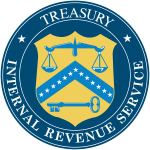 IRS Deputy Commissioner Stephen Miller announced the results of the first Schedule UTP filings as part of his remarks to the Tax Executives Institute on March 26, 2012. The audience included corporate tax professionals from a wide variety of companies many of whom had to file a Schedule UTP with their 2010 return. The size of the companies included the largest taxpayers subject to LB&I scrutiny, those in the coordinated industry case (CIC) program as well as many industry case (IC) taxpayers.
IRS Deputy Commissioner Stephen Miller announced the results of the first Schedule UTP filings as part of his remarks to the Tax Executives Institute on March 26, 2012. The audience included corporate tax professionals from a wide variety of companies many of whom had to file a Schedule UTP with their 2010 return. The size of the companies included the largest taxpayers subject to LB&I scrutiny, those in the coordinated industry case (CIC) program as well as many industry case (IC) taxpayers.
1,900 total taxpayers filed a Schedule UTP with their 2010 return. IC taxpayers filed 79% of those tax returns. That is, companies large enough to be subject to the Schedule UTP filing requirement but not large enough to participate in LB&I’s CIC program. An estimated 53% of all schedule UTP returns filed included only one or zero uncertain tax positions. Returns filed by CIC taxpayers averaged 3.1 uncertain tax positions per schedule while returns filed by IC taxpayers averaged 1.9 positions.
Approximately 4,000 issues were disclosed and about 19% of all issues disclosed dealt with transfer pricing issues. The top three code sections involved were Internal Revenue Code section 41 (research credits), 482 (transfer pricing) and 162 (trade or business expenses).
Of the 4,000 concise descriptions reviewed, the overwhelming majority described the tax position and nature of the issue in a way that satisfied the IRS. However, the centralized review process determined that about 3% of taxpayers failed to satisfy the concise description requirement. The IRS issued “soft letters” to the taxpayers whose descriptions were deemed inadequate advising them of the need to comply with the instructions.
The IRS has stated that it will not require further action from taxpayers with regard to the 2010 Schedule UTP. However, the IRS also made it clear that the small number of taxpayers whose returns included inadequate concise descriptions will have their 2011 return reviewed.
Read the Deputy Commissioner’s comments here:
Remarks of Steven T. Miller, IRS Deputy Commissioner, Service and Enforcement, Before the Tax Executives Institute, Mid-Year Conference
WSJ: IRS Drops NYSE Executive Compensation Case
 The March 2 print edition of the Wall Street Journal reports that the IRS has abandoned its effort to disallow $161 million of deductions taken by the New York Stock Exchange for compensation paid to former CEO Richard Grasso.
The March 2 print edition of the Wall Street Journal reports that the IRS has abandoned its effort to disallow $161 million of deductions taken by the New York Stock Exchange for compensation paid to former CEO Richard Grasso.
In 2003, Richard Grasso resigned under controversy when his massive pay package of the then not-for-profit NYSE was made public. A number of legal actions ensued including an IRS examination of the stock exchange. Under audit, the IRS disallowed approximately $161 million of deductions taken for compensation allocated to the former executive between 2001 and 2003.
In 2009, the NYSE challenged the government’s determination and submitted its protest to the IRS Office of Appeals. The Wall Street Journal reports that after two years in the appeals process, in November of 2011 the IRS concluded that there was no tax deficiency for the challenged years and ultimately resolved the matter in favor of the NYSE.
IRS Updates Instructions for Schedule UTP
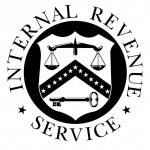 Every tax trial begins with a tax position that at least one party (often the government) thinks is uncertain. It isn’t much of a stretch to suggest that future tax trials will have some relationship to an uncertain tax position once reported on Schedule UTP. Accordingly, we hope to keep you up to date with changes affecting this form currently required of corporate taxpayers with assets of $100 million or more, but which will come to include taxpayers with as little as $10 million in assets by 2014.
Every tax trial begins with a tax position that at least one party (often the government) thinks is uncertain. It isn’t much of a stretch to suggest that future tax trials will have some relationship to an uncertain tax position once reported on Schedule UTP. Accordingly, we hope to keep you up to date with changes affecting this form currently required of corporate taxpayers with assets of $100 million or more, but which will come to include taxpayers with as little as $10 million in assets by 2014.
On February 3, the IRS revised the instructions for Schedule UTP, applicable to returns for the 2011 tax year. Notable changes include the treatment of changing members in a consolidated group, reserves affected by changed circumstances, the treatment of interest and penalties, and specific references to FIN 48 (which presumably should be read as ASC 740 for those familiar with the FASB codification).
One significant change in the instructions for schedule UTP in 2011 is the treatment of new and old members of a consolidated group. A new instruction advises:
If, after a subsidiary member leaves the consolidated group, the subsidiary, or a related party of the subsidiary, records a reserve in an audited financial statement with respect to one of the subsidiary’s tax positions in its former group’s prior return, the subsidiary should report the tax position on Part II of the Schedule UTP filed with its 2011 tax return, if it files a separate return. If the subsidiary is included in the return of another consolidated group that is required to file Schedule UTP, the common parent of that consolidated group should report the tax position on Part II of the Schedule UTP filed with its 2011 tax return.
A new example in the instructions, Example 11, explains how to record the uncertain tax position of a party subject to a corporate merger.
On June 30, 2011, MergerCo merges into AcquiringCo in a transaction in which AcquiringCo survives. MergerCo’s tax year ends on that date. After the merger, AcquiringCo records a reserve with respect to a tax position that is taken on MergerCo’s final return in its audited financial statements. That tax position must be reported on Part I of the Schedule UTP filed with MergerCo’s 2011 tax return even though the reserve was recorded by AcquiringCo. AcquiringCo should not report the tax position on the Schedule UTP filed with its 2011 tax return because MergerCo’s final return is a prior year tax return on which the tax position was reported.
Two new examples explain how to record tax positions that are new or revised because of changed circumstances. The first example, Example 2, addresses the treatment of a tax position a corporation reported on an earlier year return and determined was reasonably certain (i.e., not reported on Schedule UTP) but is then questioned by the IRS under examination. If the Corporation reevaluates the tax position and records a reserve for that prior year position in 2013, the corporation must report the tax position on the schedule UTP filed with its 2013 tax return even if the IRS identifies the tax position for examination prior to the recording of the reserve.
The second example addressing changed facts considers positions disclosed because of an expectation to litigate. New Example 5 instructs:
A corporation takes a position on its 2011 tax return for which no reserve is recorded because the corporation determines the tax position is correct. Circumstances change, and in 2013 the corporation determines that the tax position is uncertain, but does not record a reserve because of its expectation to litigate the position. That is, the Corporation or a related party determines the probability of settling with the IRS to be less than 50% and, under applicable accounting standards, no reserve was recorded because the corporation intends to litigate the tax position and has determined that it is more likely than not to prevail on the merits of the litigation. The corporation must report that position on Part II of the Schedule UTP filed with the 2013 tax return either if it records a reserve or if it does not record a reserve because it expects to litigate, even if that decision to record or not record occurs because of a change in circumstances in a later year.
Finally, the 2011 instructions offer new guidance on the treatment of interest and penalties when reporting tax positions on schedule UTP. A Corporation is not required to report accruals of interest on the tax reserve recorded with respect to a tax position taken on a pre-2010 tax return. Also, with regard to determining size and ranking of tax positions, if interest or penalties relating to the position is not separately identified in the books and records as associated with the position, the net amount of interest and penalties is not included in the size of a tax position used to rank the position or compute whether the position is a major tax position.
Read the new instructions here:
2011 Schedule UTP Instructions
IRS Announces Another Offshore Voluntary Disclosure Program
 The IRS seems to have taken a nod from the legendary Yankee backstop, Yogi Berra, because “it’s déjà vu all over again.”
The IRS seems to have taken a nod from the legendary Yankee backstop, Yogi Berra, because “it’s déjà vu all over again.”
On January 9, 2012, the IRS announced that it was “reopening” the Offshore Voluntary Disclosure Program (OVDP) for an indefinite period. This is the latest incarnation of foreign bank account disclosure initiatives undertaken by the IRS. Prior programs included the 2003 Offshore Voluntary Compliance Initiative (OVCI), the 2009 Offshore Voluntary Disclosure Program (OVDP), and the recently closed 2011 Offshore Voluntary Disclosure Initiative (OVDI). The IRS seems to have adopted the name of the 2009 program, i.e., OVDP, for this current initiative.
The current program will track many of the requirements of the 2011 OVDI program but with some important, if still undefined, differences. First, the current OVDP will be open for an indefinite period. The IRS does note, however, that it may announce a closing date at any time in the future. There is no deadline for filing a disclosure under the current program but again the IRS notes that it could change the terms of the program at any time. The IRS announcement for the new program also specifically suggests that it may increase penalties for all or some taxpayers, or certain defined classes of taxpayers. The IRS promises additional guidance on the new program within the next month and another update to the frequently asked questions (FAQs) published under the 2011 OVDI program.
One known change from the 2011 OVDI program is that penalties for taxpayers in the highest penalty bracket will be increased to 27.5% under the new program. The disclosure penalty rates for volunteers holding fewer assets in foreign account will remain at 5% and 12.5%, at least for the time being. Volunteers still must file all original and amended tax returns and include payment for back-taxes and interest for up to eight years as well as paying accuracy-related and/or delinquency penalties. Volunteers who feel the penalty is disproportionate may still opt for an examination upon filing.
The current disclosure program, like its predecessors, is directed at U.S. taxpayers who hold interests in offshore or foreign bank accounts. U.S. taxpayers include U.S. citizens, dual citizens, permanent residents, and non-U.S. citizens who may be “substantially present” in the U.S. for tax purposes. The initiative tracks the annual requirement to file Foreign Bank Account Report (FBAR), Form TD F 90-22.1. The initiative covers any bank, securities, mutual fund or other financial instrument accounts held with a financial institution. It does not include individual bond holdings or stock certificates.
Finally, the press release notes the recognition by the IRS that dual citizens and others may be delinquent in meeting the FBAR filing requirements but still owe no U.S. tax. This long overdue recognition is accompanied by a promise that the IRS is developing procedures to allow these taxpayers to come into compliance with the law.

